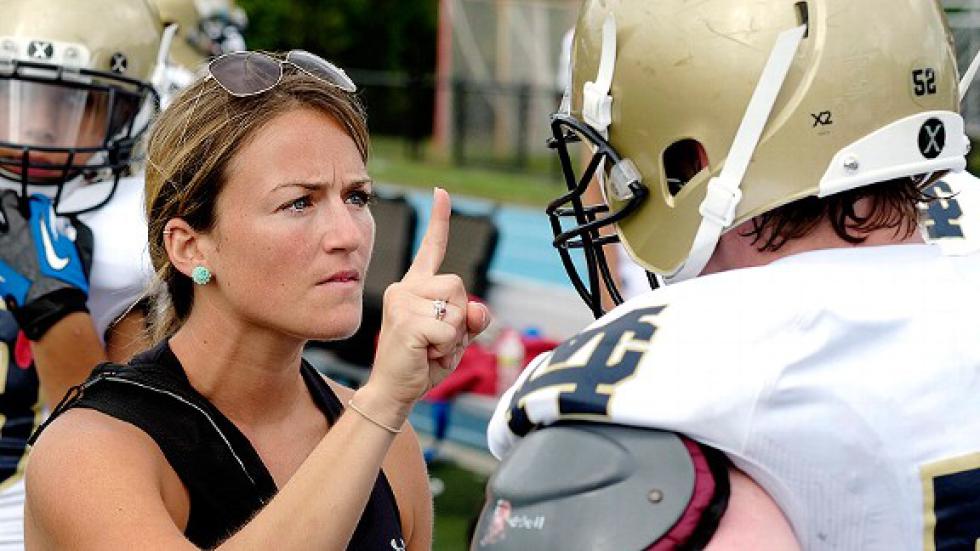Ken Murray, an MD and Clinical Assistant Professor of Family Medicine at USC, informs us that non-physicians do not die like physicians. To make things better, however, we should consider doing so:
Years ago, Charlie, a highly respected orthopedist and a mentor of mine, found a lump in his stomach. He had a surgeon explore the area, and the diagnosis was pancreatic cancer. This surgeon was one of the best in the country. He had even invented a new procedure for this exact cancer that could triple a patient’s five-year-survival odds—from 5 percent to 15 percent—albeit with a poor quality of life. Charlie was uninterested. He went home the next day, closed his practice, and never set foot in a hospital again. He focused on spending time with family and feeling as good as possible. Several months later, he died at home. He got no chemotherapy, radiation, or surgical treatment. Medicare didn’t spend much on him.It’s not a frequent topic of discussion, but doctors die, too. And they don’t die like the rest of us. What’s unusual about them is not how much treatment they get compared to most Americans, but how little.
Murray gives us no data to support not only this claim, but also why physicians might choose to die this way:
Of course, doctors don’t want to die; they want to live. But they know enough about modern medicine to know its limits. And they know enough about death to know what all people fear most: dying in pain, and dying alone. They’ve talked about this with their families. They want to be sure, when the time comes, that no heroic measures will happen—that they will never experience, during their last moments on earth, someone breaking their ribs in an attempt to resuscitate them with CPR (that’s what happens if CPR is done right).
Almost all medical professionals have seen what we call “futile care” being performed on people. That’s when doctors bring the cutting edge of technology to bear on a grievously ill person near the end of life. The patient will get cut open, perforated with tubes, hooked up to machines, and assaulted with drugs. All of this occurs in the Intensive Care Unit at a cost of tens of thousands of dollars a day. What it buys is misery we would not inflict on a terrorist. I cannot count the number of times fellow physicians have told me, in words that vary only slightly, “Promise me if you find me like this that you’ll kill me.” They mean it. Some medical personnel wear medallions stamped “NO CODE” to tell physicians not to perform CPR on them. I have even seen it as a tattoo.
But let us grant him these facts, despite the lack of data, for the sake of argument. And then let’s us get beyond the scary images here and focus on the social situation in which physicians find themselves. Murray himself notes that administering “medical care that makes people suffer is anguishing”, and so we need to ask questions about what a career of such anguish might do to one’s ability to be rational about end of life choices. Furthermore, when deciding about what kind of life is worth living, there are at least three reasons to be skeptical of the answer that many physicians give. First, while they are often highly skilled organic plumbers, they almost always have no particular expertise in the complicated ethical questions surrounding quality of life issues. Second, as I pointed out in my last two posts, they are often wrong about the diagnosis and medical facts on important end of life issues. Third, they almost always lead very privileged, educated lives such that they are disproportionately unlikely to understand or imagine how those without such benefits can find their lives fulfilling.
Indeed, a recent study found that patients actually preferred longer life to quality of life. “I was quite surprised by the results,” said lead author Dr. Hans-Peter Brunner-La Rocca, of University Hospital Basel in Switzerland. “Often we think we know what is best for a patient, but this is often wrong.”
Former director of Medicaid and Medicare services Dr. Peter Bach helpfully nuanced Murray’s position:
The more nuanced reality is that some aggressive treatment delivers value and is appropriate, even though some patients who receive such care die; other treatment is too aggressive and should be curtailed no matter what the short-term outcome. No one knows how many patients are more like my patient, who could have died but whose life was saved, and how many undergo treatments and tests even though there is no meaningful chance they will benefit from them. The important thing is that it’s not all of one and it’s not all of the other. Today the medical profession lacks a shared understanding of which patients are which. That gap must be addressed. It will be an excruciating task, and it will be politically noxious. Someone will again accuse officials of forming death panels. But leaving the distinctions to individual doctors leads to inequities, harm to patients, distrust in medical care and lawsuits; ignoring the problem should not be an option, either.
Indeed. But in the meantime there are lots of other things we can do to drive down the costs of health care. We can provide primary care for our most vulnerable populations, we can make a concerted effort to cut waste and fraud, and we can make efforts to treat more people at home.
One thing we need not do, however, is die like a physician…or at least as Dr. Murray would have us die.





Charlie, I agree with your concerns – although I do not quite think it is fair to move from we don’t really understand the nature of unconscious or minimally conscious states and thus, are often wrong about those particular diagnoses to jump to they are OFTEN wrong about medical facts and diagnosis of end of life issues – that is a big jump. (In particular, because most end of life decisions, medical realities aren’t about those particular neurological questions). (and by extension – depending on the medical specialty, it isn’t quite fair to assume the have no experience in the complicated ethical issues surrounding end of life and quality of life decisions — for example these would be quite front and center for doctors who specialize in palliative care or degenerative diseases like ALS)
Part of what bothered me about the Murray piece is that he doesn’t examine some underlying presuppositions and not all of them, accurate, depending on the type of doctor one is.
1. It assumes that doctors have an easier time accepting the reality of death given their medical knowledge. While in my experience, this is true of some – this for example tends not to be true among medical oncologists (chemo doctors) where it is among surgical oncologists (whose primary specialty is not cancer). The acceptance and approach to death is likely to differ not only by the individual person but also by specialty. It is simply incorrect to jump to the conclusion (as Murray I think does) that medical professionals have a greater and healthier acceptance of the limits of modern medicine and of death itself.
2. The example of the surgeon in the article – raises some important points that for me are about informed consent. if it is to be presumed that this doctor really do understand (certainly better than the average person) the costs/benefits of a particular surgical procedure and rejects it — would he push it on his patients with the same medical status? and how do we address the gap in informed consent possible among the general population vs. the medical population.
Also – the bringing healthcare home is such an important component….but requires us, as a society, to really place resources available for families not just in authorizing home care visits. There needs to be available credit (as in social security credit) and financial resources to compensate families (generally women) who must either take lower paying part time jobs or quit in order to provide home care for loved ones (as a society, we have a responsibility to support families able to care at home – and it will still be cheaper).
Hi Meghan…thanks for your thoughts. “Often” is a relative term, of course, and I’m sorry if I gave the impression that it was “a majority of the time” or something like that. I meant that they are wrong far too frequently for us not be critical of their diagnoses and prognoses…especially when the stakes are so high. In my experience of case studies and on ethics committees, I’ve heard remarkable story after remarkable story about those who have lived flourishing lives after receiving news that this was not going to happen. (In some of those situations, the physicians’ reasons for giving the ultimately inaccurate diagnosis and/or prognosis were colored by their distaste for the quality of life that the patient would likely have.)
I also think we need to be especially concerned about cases involving the use of new technologies and drugs, the long term results of which we simply don’t know.
An interesting and related fact/tidbit – so the prognosis and reality for ALS is both clear from diagnosis (and unclear in terms of treatments which fend off symptoms prolonging health/mobility/communication) – however, its a pretty clear devastating diagnosis and reality YET, when they poll patients vs. caregivers — the caregivers and doctors rate the patients “quality of life” significantly lower than the patient him/herself often rates their quality of life as the disease progresses.
And I agree 100% on new technologies and drugs (also why if we’re not going to BAN direct ot consumer advertising of such things – i think there should be at least a 2yr waiting period before you’re allowed to).
And, I agree – particularly where neurology is concerned….HUMILITY is a virtue that needs to be cultivated within the medical field!!!
As a physician in training, I can confirm Murray’s anecdotal evidence about physicians not wanting to die in an ICU. I also agree with your 3 caveats and Meghan’s injunction for humility (we sorely need that). I don’t think this needs to be or even should be a government policy. It should be individuals like Charlie the orthopedist making decisions by their own freewill. Meghan makes a very good point that it raises questions about “informed” consent when doctors refuse their own medicine. Much of the problem is that we’ve accepted a secular worldview of medicine, that the doctor’s role is to maximize heartbeats, rather than a Judeo-Christian one like Maimonides’: “Almighty God! Thou hast chosen me in Thy mercy to watch over the life and death of Thy creatures.”
A lot depends on the framing of the question “Would you rather live or die?” vs. “Would you rather die with tubes stuck in you, putting on the backs of your grandchildren a great burden via increased taxes, or without?” I know for myself, I do not want to die in a hospital and I certainly don’t want to die in an ICU. And that, at least, is true for most people.
After my father died, 1995, I was told by my uncle that his doctor told him he could get treatment that might extend his life. My uncle did not know what the treatment was, but I am convinced it was a heart transplant because of is previous heart attack, and long term cigarette smoking.
My father chose not to have the treatment. I am rather proud of that fact. He was nearly 70, and, I believe, chose to live his life as best he could, which was quite well until the day of his death.
I am 64, and I am not sure what my choice would be, but I suspect I would refuse also. If I were 44 the choice would very likely be different.
I doubt a heart transplant would have extended my father’s life much, and it would be at great expense. Even under the best of conditions I would not see the cost worth it when there is so much more good that could be done with that money.
I will just remember I do not have to accept heroic measures, under Catholic teachings. If there is a good chance of recovery, with a decent prospect of participating in life, sure, I’ll try for it. But when the odds are bad, and the good results not all that good, then I will say let it go.
When Pope John Paul II was in his final illness, at a weekday mass with a small attendance we gathered around to pray for the Holy Father. The others prayed for his recovery. I prayed for God’s mercy on him, and I suspect he would consider being allowed to pass away the mercy he wanted. There comes a time to lay down the burden, for a pope or for any of us. I pray I will know when that time comes.
I am dealing with a chronic health condition myself (thankfully, it’s been pretty non-eventful), and a question I was encouraged to ask doctors when they were proposing treatment was not “What do you think I should do?” but rather “What would *you* do if you were in my shoes?” The idea was that doctors might answer the two questions differently.
So my question re: this post is: would it be appropriate for a doctor to ask a patient something like, “Do you value more highly a ‘higher quality’ life (less pain, less risk, fewer tubes, whatever) or a longer life?” Would that allow for more open conversation between doctors and patients? I know I can feel swayed by what I think a doctor *wants* me to do, and I’ve been grateful when doctors have given me information to let me decide for myself more informed-ly.
What might a good conversation look like?